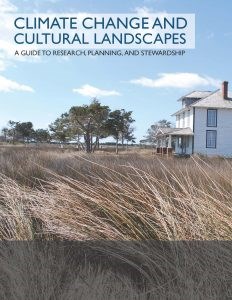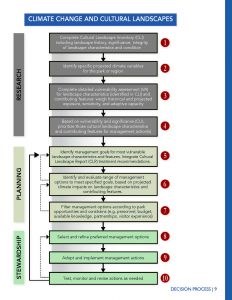
Cultural landscapes, like all cultural resources, continue to experience the many impacts of projected climate change. Such valued places benefit from a concerted effort to understand these impacts and respond to the management challenges of protecting them now and for future generations. This requires a team that integrates a diverse range of skills, including those of cultural landscape specialists, climate scientists, historic preservationists, ecologists, biologists, resource managers, historical architects, material conservators and others; theirs is the task to directly tackle what may often be an uncomfortable level of uncertainty. The National Park Service, through its Climate Change Response Program and its Cultural Landscapes Program, plays a leading role in developing and testing creative tools and models to support this effort, as anchored in cultural resource management policy and protocol. It is, and must be, an on-going, dynamic process, with foundational insights derived from careful efforts, reports and models fostered by those programs. Their investment forms an indispensable part of cultural landscapes’ shared legacy.

Appreciation is extended to the NPS Cultural Landscapes Program, both nationally and in the Pacific West Region; the NPS Climate Change Response Program; and the NPS Associate Director, Cultural Resources, Partnerships, and Science. Very special thanks to the NPS National Center for Preservation Technology and Training for financial support and flexibility, as well as the University of Oregon Office of the Vice President for Research and Innovation.
Contact: rzm@uoregon.edu
Last updated: April 7, 2025
